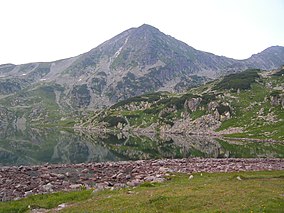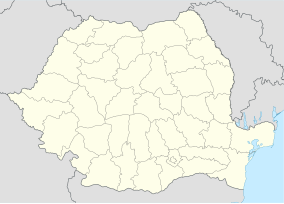Retezat National Park
| Retezat National Park | |
|---|---|
| Parcul Național Retezat | |
 Retezat Mountains, near camping site Bucura | |
Location within Romania | |
| Location | |
| Nearest city | Lupeni |
| Coordinates | 45°20′N 22°50′E / 45.34°N 22.83°E[1] |
| Area | 38.047 hectares (94.02 acres) |
| Established | 2000[2] |
| Website | retezat.ro |
The Retezat National Park (Template:Lang-ro) is a protected area (national park category II IUCN) located in the Retezat Mountains in Hunedoara county, Romania.[3]
Description
Containing more than 60 peaks over 2,300 metres (7,500 ft) and over 100 crystal clear deep glacier lakes, the Retezat Mountains are some of the most beautiful in the Carpathians. In 1935 the Government of Romania set aside an area of the Retezat Mountains creating the country's first national park.
Currently the park has 380.47 km2 (146.90 sq mi).[4] The area shelters one of Europe's last remaining intact old-growth forest and the continent's largest single area of pristine mixed forest. The highest peak of the Retezat Mountains, Vf. Peleaga, 2,509 metres (8,232 ft) is located in the park. The park also includes about 80 glacier lakes.
In 1979 the Man and Biosphere Program of UNESCO included the park in the international network of biosphere reserve.
Flora and fauna
The flora consists of approximately 1190 plant species, of which 130 have the "endangered" or "vulnerable" status. Wolves, brown bear, wild boar, Eurasian lynx, European wildcat, chamois, roe deer and red deer, as well as small carnivore species such as Eurasian badger and Eurasian otter populate the park.
The Gemenele ("The Twins" in Romanian) scientific reserve is a strictly protected area of the park enclosing an intact primeval forest.
References
- ^ eunis.eea.europa.eu - Retezat National Park (coords); retrieved on June 14, 2012
- ^ Template:Ro icon cdep.ro - Legea Nr.5 din 6 martie 2000, publicată în Monitorul Oficial al României, Nr.152 din 12 aprilie 2000; retrieved on June 14, 2012
- ^ protectedplanet.net - Retezat National Park (location); retrieved on June 14, 2012
- ^ Template:Ro icon apmhd.anpm.ro - Agenţia pentru Protecşia Mediului Hunedoara; retrieved on June 14, 2012
External links
- Official site
- Map of the Park
- Jiu Valley Portal - the home of the Official Jiu Valley City Websites and a gateway to the Retezat National Park and other destinations in the Transylvanian Alps
- Maps of the Retezat and other mountain ranges in the Transylvanian Alps
- Touristic Maps of the Retezat Mountains


